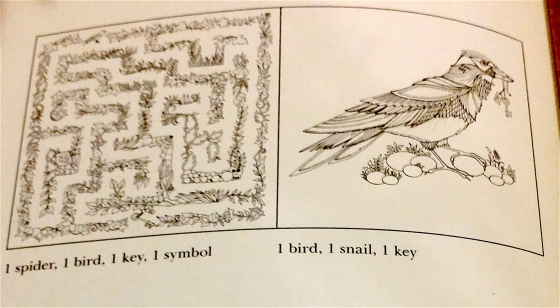Oh, How we WISH we knew this back then.
 “Remember, your 20s only happen ONCE in a lifetime”
“Remember, your 20s only happen ONCE in a lifetime”
PART One: #1 through #5
We asked our Fearless Leaders in their Thirties (30s) – AKA my friends (thanks, girls!) – to take a trip down memory lane for some career advice and life lessons to share with their Fabulous Twenties (20s) counterparts.
Here’s a list of what they learned in their 20s, some things they wish they could have known back then, and why they think you’d be happier if you follow these 10 tips for success.
1. Millenials, Be Fearless. #feelthehope
-
Fear is the most debilitating and paralyzing enemy we had in our 20s. Fear of failure, being alone, being unlikeable, not meeting others’ expectations, and/or being embarrassed have all held us back at one point in our lives. The trick is to redefine fear in your mind. Understand that fear is a natural, common feeling and phenomenon for all of us (even the BEST of us!). “Fearless” in our books doesn’t necessarily mean that we never feel fear. On the contrary, it means that we know what fear feels like – that knee-shaking, heart-stopping moment at some point in our lives. “Fearless” to us means that we’ve learned to actually overcome it. We’ve felt it, but we still kept going. We pushed and pushed forward, no matter what, because we knew it was the right thing to do. And we did so with that idealism and passion of a Twenty Something year old. So when you fear something or someone, understand that like all other emotions, fear does not have to define or drive the decisions you make in your 20s.
2. Work. Work HARD. Like, REALLY HARD.
-
If you find yourself glancing over any get rich quick schemes or constantly updating yourself about who’s on the 30 under 30 list, know that nearly 99% of your success will be the direct result of nothing else but sweating it in your 20s. Overtime? Check. Volunteering on Weekends? Double Check. Part time school on evenings? Check. If you’re defining your work day as a 8 AM coffee to 4:59 PM let’s run out the door, we can guarantee that success will not come knocking on your door. Work hard. Commit to ensuring that your work is a reflection of your best self and know that you will always be your own best advocate. From the shortest memos to the most complex program designs, own it! Yes, “work smarter, not harder” – we have all heard that phrase, but understand that nothing worth having in life will be handed to you. Throw away your sense of entitlement. If you truly want something, work for it and be ready to roll up your sleeves when opportunity knocks.
3. Be Ready to Welcome Failures – in ALL Aspects of Your life.
-
Failed relationships? Been there. Failed Career moves? Yup. Failed to pay the Credit Cards? Ouch! We have an Acronym to describe the not so glamorous days of our 20’s: FFOYF – Fall Flat On Your Face. No matter how smart, how beautiful, how gifted and special you are, the inevitable moment FFOYF will come. We realize that you’ve heard this a thousand times already, but really, life is about being ready to learn from your failures and mistakes. (That’s the 1,001st time you’ve heard it, so know that it’s something worth remembering!) And we’re very sorry to say this, but sometimes, the harder you fall, the softer the blow on your long-term well being. (Think of it as the Universe practicing tough love for you.) Sometimes, we just had to trust that things were meant to break apart to fall into its ideal place. And the only way we could ever run faster (or fly even), was by first learning how to get back up. The important thing is that we recognized the reasons behind our failures and we promised ourselves to be better from it, not worse.
4. Learn as Much as You Can / Actively Seek Out Opportunities to Build Skills.
-
Have a Coursera account? Log in. Udacity? DO it! Skillshare? What are you waiting for? Learn to knit, create illustrations, code, build websites, and otherwise build as many skill as you can and want. Ever catch yourself saying, ‘Oh yeah, that sounds interesting. Maybe I’ll do it.” Well, turn that “Maybe” into a “Must”, and you will be glad you did in your 30s. Any technique and/or skill that you pick up in your 20s will become a huge asset in your 30s. Whether it’s volunteering to help out another team’s project or assisting a Manager to help launch his/her plan, be proactive in seeking out new opportunities for growth.
5. Be Your Own Best Friend.
-
For us, this was the most difficult part of it all. In our 20s, we were so busy being critical of ourselves and so engrossed in the idea of trying to be a certain “Me” that we had to re-learn what it meant to feel comfortable in our skin again. We can’t stress the importance of investing in who you are. Whether it’s taking up a hobby or relaxing by the beach for 30 minutes or having a glass of your favorite tea in the morning, don’t hesitate to set aside some time for you and you alone. And please do talk to yourself. (Ok, so maybe not in public.) Tell yourself it’s going to be great, that tomorrow is going to be awesome, and that everything will turn out okay in the end. To summarize, treat yourself the way you’d want to be treated by that Ideal Guy you’ve been trying to dream into reality. (We’ll touch upon this mega-important issue in Part 2, hoho!)
*****************************************************************************************************************************
Hope you enjoyed our humble Part 1 to thriving in your fabulous 20s.
Any comments or suggestions? Feel free to email us or leave your thoughts below.
<Careergal’s Part 1 from The 30 Something Girls’ Guide to Surviving, NO, Thriving in your Twenties ! >
#imwithher #feelthebern

















You must be logged in to post a comment.